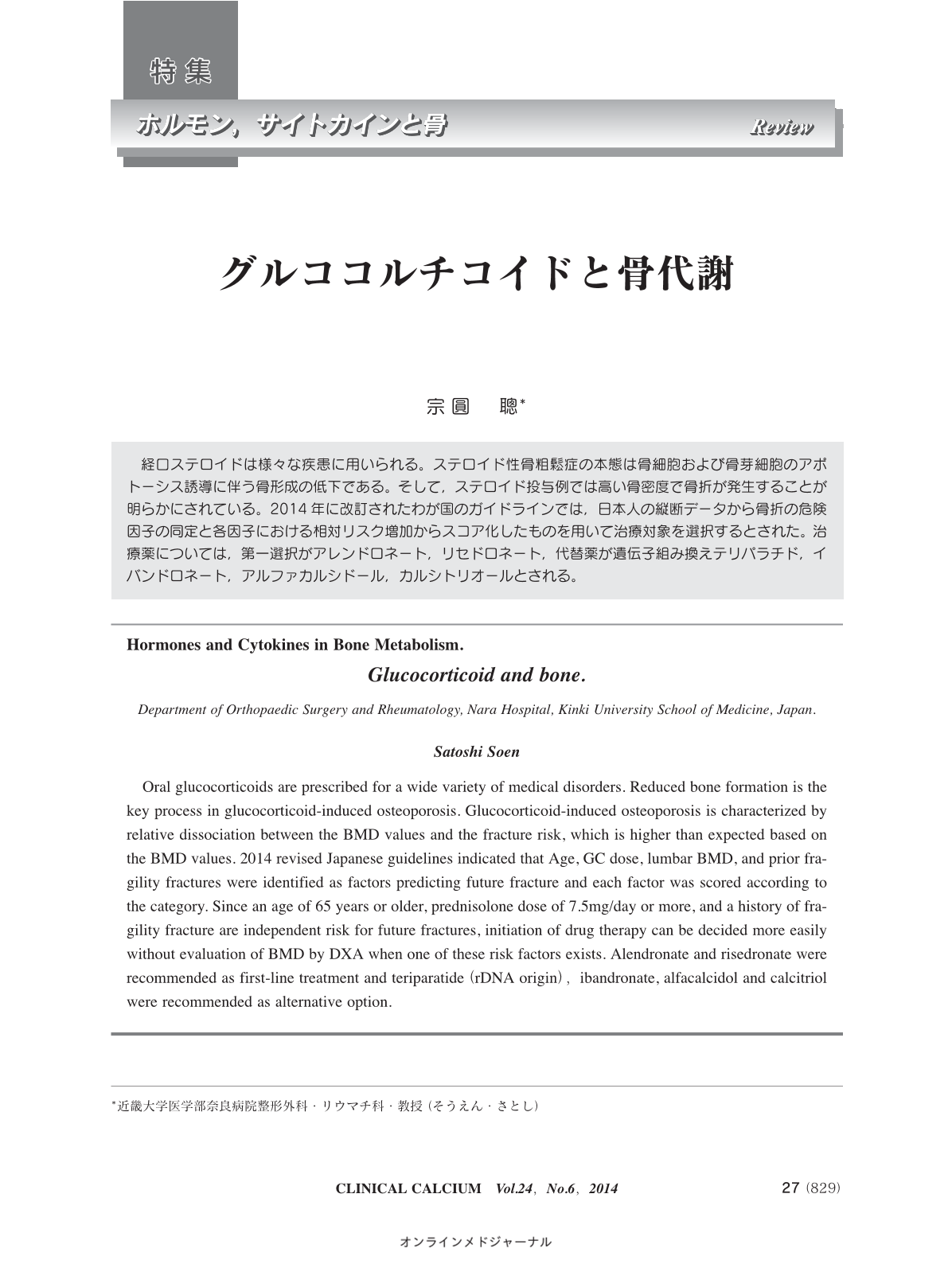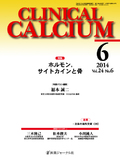Japanese
English
- 有料閲覧
- Abstract 文献概要
- 1ページ目 Look Inside
- 参考文献 Reference
経口ステロイドは様々な疾患に用いられる。ステロイド性骨粗鬆症の本態は骨細胞および骨芽細胞のアポトーシス誘導に伴う骨形成の低下である。そして,ステロイド投与例では高い骨密度で骨折が発生することが明らかにされている。2014年に改訂されたわが国のガイドラインでは,日本人の縦断データから骨折の危険因子の同定と各因子における相対リスク増加からスコア化したものを用いて治療対象を選択するとされた。治療薬については,第一選択がアレンドロネート,リセドロネート,代替薬が遺伝子組み換えテリパラチド,イバンドロネート,アルファカルシドール,カルシトリオールとされる。
Oral glucocorticoids are prescribed for a wide variety of medical disorders. Reduced bone formation is the key process in glucocorticoid-induced osteoporosis. Glucocorticoid-induced osteoporosis is characterized by relative dissociation between the BMD values and the fracture risk, which is higher than expected based on the BMD values. 2014 revised Japanese guidelines indicated that Age, GC dose, lumbar BMD, and prior fragility fractures were identified as factors predicting future fracture and each factor was scored according to the category. Since an age of 65 years or older, prednisolone dose of 7.5mg/day or more, and a history of fragility fracture are independent risk for future fractures, initiation of drug therapy can be decided more easily without evaluation of BMD by DXA when one of these risk factors exists. Alendronate and risedronate were recommended as first-line treatment and teriparatide(rDNA origin),ibandronate, alfacalcidol and calcitriol were recommended as alternative option.



